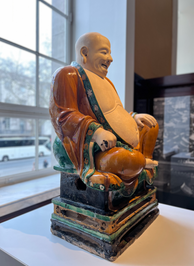Museum Moments: My Artist Eyes vs. My Family's Honest Reactions
- Sok Han Teng
- 18 hours ago
- 3 min read
This March, I visited London and the Netherlands with my family. When I planned this trip, visiting museums was at the top of my to-do list because these countries are home to
world-renowned museums.

My family will just tags along, not knowing exactly what’s in store. While I sometimes worry they might not find museums as interesting as I do, I still believe museums offer a far richer experience than many tourist attractions designed solely to entertain or impress visitors. Museums not only enrich our understanding of history, culture, and aesthetics—they can also simply delight anyone who enjoys looking at beautiful things.
As much as I hope everyone enjoys the museum visits, I’m also happy to share what I know about certain artworks and artists that I’m genuinely fond of.

A Different Point of View
We had some fun and thoughtful conversations while exploring the museums. On this trip, we visited the National Portrait Gallery and The British Museum in London, as well as the Rijksmuseum in Amsterdam. I was delighted to see that we all enjoyed the artworks. At The British Museum, we unexpectedly received a free tour of the Asia Hall from a friendly Malaysian volunteer guide. His way of telling religious stories was truly captivating.
While walking through the galleries, I noticed an interesting difference in how my family and I experience paintings. It made me reflect on the simple joy of standing in front of an artwork, just admiring and wondering. My siblings and their partners don’t have a background in art, so I respectfully consider them “laypeople.” Their comments were refreshingly emotional and spontaneous:
“This looks so real!”
“I can see the texture of the fabric—amazing!”
“Naked bodies are so common!”
“Hmm... chubby people were the standard of beauty back then.”
“I think there’s a meaning behind that angel baby with wings.”
Some paintings even sparked impromptu, funny stories among us, which made those pieces even more memorable.
My way of looking at art is quite different. When I view a painting, I tend to zoom in on how it was made—the brushwork, layering, color mixing, play of light and shadow, composition, and the techniques used. This process of "reverse-engineering" excites me. I often find myself dissecting how the masters painted details like fabric folds, hands, or fluffy dog fur by studying the work up close.
Among the thousands of paintings on display, my attention naturally drifts toward those that stand out visually—especially since we don’t have the whole day to spend in the museum. Interestingly, the artworks almost seem to compete for your attention when placed together in the same room.
I must admit, while realistic paintings often stun me with their technical precision, impressionist works intrigue me in a different way. Their creativity and emotional depth are ineffable. They invite you to feel rather than judge—and that, to me, is a powerful kind of magic.

Van Gogh Became A Point of Discussion
When we reached Van Gogh’s paintings, my family’s reactions turned into questions.
“There’s no realism in his work.”
“I feel like I could paint like this—why is he so famous?”
I explained that during Van Gogh’s time, his style was groundbreaking. He didn’t try to imitate reality—he painted emotion, sensation, and his inner world. He broke free from realism to create something entirely his own, which is an extraordinary leap for any artist. I understood their confusion—I once thought the same way.
To my family, visiting museums and looking at art feels like opening a book to an unfamiliar world. They take it all in with an open mind, responding to what they see and feel. For me, the interaction is different. Sometimes I’m seeing artworks I’ve studied or admired online countless times, and being in front of them feels like meeting an old friend. It’s a strange yet familiar joy, whether I’m looking at an original or a replica.
Here are some of the paintings I photographed (Pardon the photography angle—I had to snap it quickly before people walked into the frame):
As I’ve been faithfully keeping a travel journal with me, I couldn’t resist asking my family for their thoughts after the museum visit, so I could record them as keepsakes. Overall, their responses were positive and open-minded. I feel they’re beginning to connect with paintings on a deeper level now.
In the end, our differences in experiencing art aren't about better or worse—they’re simply about focus. Artists often look through a painting to understand how it was constructed, while laypeople usually look at a painting to find meaning or emotional connection. Both perspectives are valid and valuable. I’m grateful that my family respected my artistic curiosity—and my sometimes not-so-fantastic explanations about the artworks and artists we encountered in the museums.





























Comments